 I'm back from my annual pilgrimage to the Greenbelt Festival (official website) and I've got six hours left till the end of August and the 'deadline' for the 31 days to a better blog challenge.
I'm back from my annual pilgrimage to the Greenbelt Festival (official website) and I've got six hours left till the end of August and the 'deadline' for the 31 days to a better blog challenge.
So, it seems like a good time reflect on the month of blogging, what I've learned, and to see if I can tick off any of the remaining tasks on Daren's task list.
The learning journey so far
I started blogging in May this year, after many years considering starting and one or two aborted attempts. Over August this blog has evolved from a fairly assorted collection of posts, to have a stronger focus on youth participation. It provides a space for me to share content, engage in discussion, and invest time in critical thinking.
The 31 day challenge has encouraged me to look carefully at the blog from a visitors point of view (which made me realise early on that I needed to tweak blog settings to get comments working, and that I needed a lot more explanation about this blog) – and I've benefited a lot from the advice and shared learning of other 31 day challengers, not least with respect to improving this page giving a background to Tim's Blog. As that page says, this is still the early stage of my journey with blogging, and the exact focus of the blog is still evolving – but with these draft principles to guide me I'm on a far stronger blogging footing that I was at the start of August. As with any intense process of learning, the full results will take a while to be seen… so for now, lets look at the last 11 challenges and I'll pledge to post a wider reflection on my blogging in a couple of months time…
The tasks and some reflections:
Day 21 – Make a Reader Famous
 I try to link across to other blogs as much as possible in posts where the work of other bloggers adds to the topic or post in question. I realise, however, that I've often done that just by talking about, for example, Mike's blog, with an inline link, flooding the top of posts with lots of links, and not being selective enough or purposeful enough with my linking to other blogger. Perhaps less can be more in terms of links pointing blog readers to the blogging of other readers.
I try to link across to other blogs as much as possible in posts where the work of other bloggers adds to the topic or post in question. I realise, however, that I've often done that just by talking about, for example, Mike's blog, with an inline link, flooding the top of posts with lots of links, and not being selective enough or purposeful enough with my linking to other blogger. Perhaps less can be more in terms of links pointing blog readers to the blogging of other readers.
Daren also suggests increasing the profile of readers on a blog by using comments as the basis for posts. This seems a great idea, not only in that it highlights the comments of a particular reader, but it shows that comments contribute to a debate in the blogosphere.
Roger Schmidt (whose group blog with the Lutheran World Federation has made it into my reguarl reading list and is already providing a lot of food for thought) provided me this week with an opportunity to build a post around a readers comments. I was challenged to think about the concept of the 'voice of youth' by Roger's comments, and found I couldn't fit my reflections into a short reply, so this post emerged and can hopefully provide space for more discussion.
Day 22 – Catch New Readers Up on the Basics of your Blog
During the 31 day challenge I've made a lot of changes to my about this blog pages – but readers keeping up with Tim's Blog through the RSS feed or e-mail updates and regular readers won't see changes to that page. These 31-day pages have done a lot to keep readers up to date on the evolution of this blog, but as Daren suggests, periodic updates to put blog posts into context can be an important part of effective blogging, so do look out for these context-setting posts in the future.
Day 23 – Go on a Dead Link Hun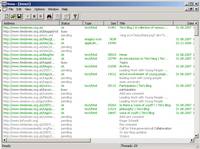 t
t
I've already mentioned that I can be 'link happy' with my blogging. More links now, however, means more chance of broken links in the future.
A quick check using Xenu's Link Sleuth didn't show up any permenant problems right now (although it did show a few links to other blogs that timed out…) – however, I will need to keep an eye on links in the future.
Day 24 – Do a Search Engine Optimization Audit
There is an interesting challenge for those blogging in the youth participation and youth work niche. I primarily work on, and reflect on, work with young people in secular contexts. However, if you search for youth work online, you'll find predominantly faith based youth work blog posts, which can be a very different niche. I'm not quite sure how to resolve that yet, but I'm hoping that an upcoming seminar at Leicester De Montfort University by Thomas Vander Wal (intentor of the term folksonomy and recently blogging on the state of tagging) might provide some space for an exploration of keywords online.
Day 25 – Go Shopping and Improve Your blog
For day 25, Daren suggests visiting a local shopping centre and watching people's behaviours to find lessons transferable to blogging.
I wish I had picked up this challenge on the 25th of August, rather than when I returned from Greenbelt festival. As a phenomenal example of a temporary community – packed full of creativity and celebration, chance interactions and deep conversations, serious commentary and off-topic commedy it seems a far better mirror of the blogosphere that I want to engage with than does the commercial world.
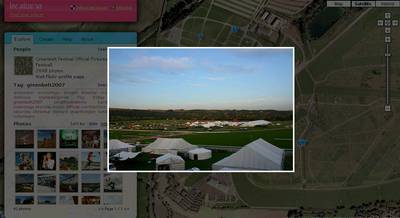
(Greenbelt is an annual christian arts festival held on Cheltenham Race Course in the UK, attracting a diverse group of around 20,000 people, often from the 'liberal fringes' of the church or from beyond the conventional boundaries of christian / non-christian. It has developed a strong committment as a festival to social justice, and has a vibrant community atmosphere – with a quite undescribeable diversity of festival events, from headline music acts to seminars on nationalism and scottish independence. I can't do it justice in a quick paragraph – but you can see a bit of the festival here, or read more on the official site here)
The youth work seminar series at Greenbelt has certainly given me a lot to think and hopefully blog about.
And from observing shoppers in the Greenbelt marketplace I've learnt that it might seem like a good idea to buy a multi-coloured stripy cardigan with tassles when everyone around you is buying them… but you're not going to want to walk off site into Cheltenham wearing that now are you…
Day 26 – Link Up to a Competitor
I've already confessed to my propensity for linking to other sources (although this post seems notably link free). Often those links will be to other bloggers in the niche I write for – although as mentioned before, I'm not working in a collaborative, rather than a competitive mindset. I'm really keen to see the development of a stronger youth participation and youth work blogosphere in England and the wider UK, so linking to newcomers and conversations taking place on other blogs in the sector is key to building that. (If you're a new youth participation / youth work blogger – drop me a line and I'll point people in your direction…)
Day 27 – Find a Sponsor for Your Blog
Much of the content for this blog emerges as a result of my full time work, and so that does, in a sense, act as sponsorship for my blogging. Although I've not, as yet, looked carefully enough at building time to reflectively blog into my costings and work plans. As blogging does act as a powerful reflective learning tool, that is something I'll be exploring.
Day 28 – What is Your Blog’s Mission Statement
I'm still evolving a mission statment for this blog. My principles are a first part of that evolutionary journey, but this task will have to wait till I've got a long train journey to spend some time reflecting.
Day 29 – Email a Blogger that Linked to You to Say Thanks
The 31 day challenge has encouraged me to become a lot more interactive in blogging – and that pays real dividends. It also take a lot of time. The challenge is in finding equilibrium – knowing when interaction is valuable, and when the fact that someone links to something I've written (either here or elsewhere on the web) can lead to more than platitude. A bit more reflection on how I move forward with a sustainable level of online interaction is also scheduled in for the upcoming train journey (hmm, and I find myself hoping for delays again!).
Day 30 – Explore a Social Media Site & Day 31 – Run a SWOT Analysis on Your Blog
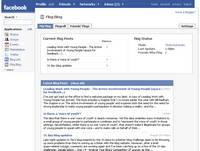 Only four hours left now (there were six when I started writing this post!) till the end of August, and I think, for the sake of being able to get some rest this evening, and for your sake (my attempt at a SWOT is likely to run on a bit…) I think my write up on these two task shall have to slip.
Only four hours left now (there were six when I started writing this post!) till the end of August, and I think, for the sake of being able to get some rest this evening, and for your sake (my attempt at a SWOT is likely to run on a bit…) I think my write up on these two task shall have to slip.
I'm already to be found in many social media spaces. And I've been exploring integrating my blog better with facebook using FlogBlog this month, as well as enjoying the interaction offered by MyBlogLog – but I'll leave more commentary on my experience with social networks and blogging for a later date.
The end?
The 31 day challenge has been a valuable learning experiment for me in blogging, and I'm not yet done with all my learning from it. I hope that these posts have provided some insight into the process (although I admit they've not always distilled learnings as much as I'd like… something I'm still learning to do) and that they've not disrupted the flow of other posts.
This isn't the end of improvements to Tim's Blog, and I hope it won't be the end of the very helpful suggestions, constructive criticism and input I've recieved from many readers. Thankyou to all who've helped – and to all the other 31 day challengers, I look forward to continuing to read your writings, and to opportunities for more peer learning in the near future…
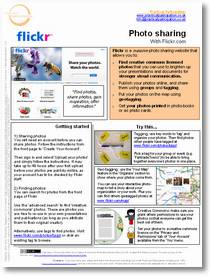 I've recently started creating a series of 'Social media in one side of A4' mini guides as part of an online course I'm leading to introduce social media into one of the organisations I work with.
I've recently started creating a series of 'Social media in one side of A4' mini guides as part of an online course I'm leading to introduce social media into one of the organisations I work with. I'm back from my annual pilgrimage to the
I'm back from my annual pilgrimage to the  I try to link across to other blogs as much as possible in posts where the work of other bloggers adds to the topic or post in question. I realise, however, that I've often done that just by talking about, for example,
I try to link across to other blogs as much as possible in posts where the work of other bloggers adds to the topic or post in question. I realise, however, that I've often done that just by talking about, for example,  t
t

 Only four hours left now (there were six when I started writing this post!) till the end of August, and I think, for the sake of being able to get some rest this evening, and for your sake (my attempt at a SWOT is likely to run on a bit…) I think my write up on these two task shall have to slip.
Only four hours left now (there were six when I started writing this post!) till the end of August, and I think, for the sake of being able to get some rest this evening, and for your sake (my attempt at a SWOT is likely to run on a bit…) I think my write up on these two task shall have to slip.
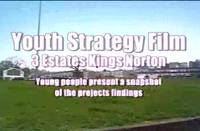 A great video about the challenges young people face in a local area, that is never seen by those who are responsible for the decisions that could improve things, is an opportunity missed. Identifying who should see your video, and inviting them to watch and respond to it, is an important part of any change-making video project*.
A great video about the challenges young people face in a local area, that is never seen by those who are responsible for the decisions that could improve things, is an opportunity missed. Identifying who should see your video, and inviting them to watch and respond to it, is an important part of any change-making video project*.
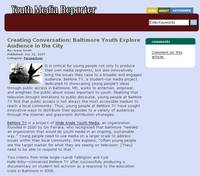 As I was preparing this post I came across
As I was preparing this post I came across 
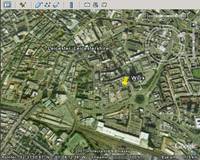 That can make it rather tricky to make an informed decision on responding to a planning application.
That can make it rather tricky to make an informed decision on responding to a planning application.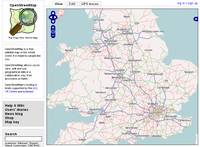 So whilst we've got access to a growing number of free-to-use tools for
So whilst we've got access to a growing number of free-to-use tools for